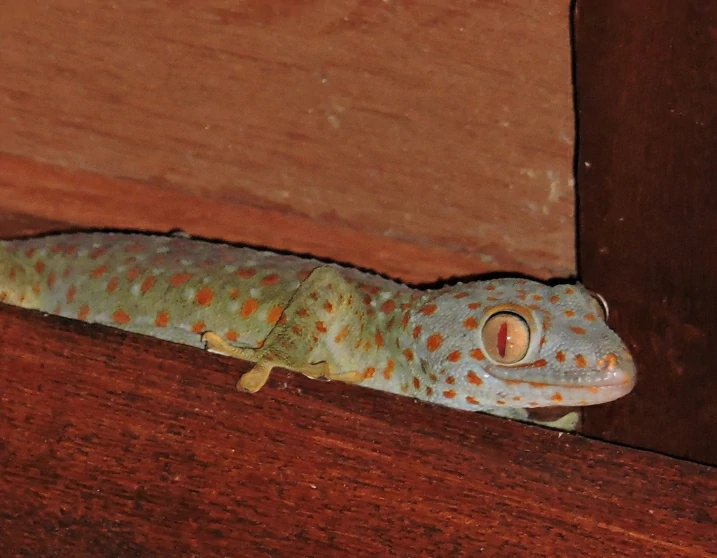You’re walking outside on a sunny afternoon and notice a gecko sitting on the bark of a tree. For a moment, it almost disappears from sight. You blink and wonder: do geckos camouflage?
Yes, many geckos can camouflage. They can change their skin shades or blend with their surroundings, which helps them hide from predators and sneak up on prey. This isn’t like the bright, flashy color changes of a chameleon. Geckos rely on small changes, patterns on their bodies, and their natural behavior.
What Camouflage Means for Geckos
Camouflage is nature’s way of helping animals hide. For geckos, it usually means their skin matches the colors and textures around them.
Think of a gecko with brown, mottled skin resting on rough bark, or a pale gecko sitting on a sandy wall.
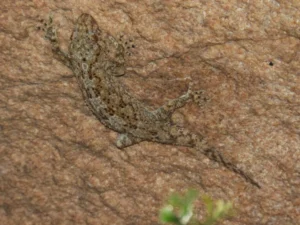
Their goal is simple: stay unseen long enough to survive.
Do All Geckos Change Color?
Not all geckos can change color, but many can shift shades a little. For example, house geckos often turn lighter or darker depending on where they rest and the light around them.
Leopard geckos don’t change color on demand, but their spots and stripes give them natural camouflage against rocks and sand.
How Geckos Actually Change Colors
Some geckos have special skin cells called chromatophores. These cells have tiny pigments that can expand or shrink, making the gecko look lighter or darker.
They can’t turn bright neon colors, but they can blend with the tones of their surroundings.
At night, many geckos appear darker, which helps them stay hidden in low light.
Why Camouflage Is Important for Geckos
Geckos are small, and lots of predators see them as easy food. Birds, snakes, bigger lizards, and even cats hunt them.
Camouflage helps geckos avoid being seen, giving them more time to escape.
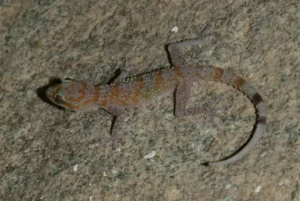
Camouflage also helps geckos when they are hunting. Insects like moths and crickets don’t notice them as easily when they blend in, letting geckos get closer before they strike.
Can Geckos Camouflage Indoors?
Yes. Even inside homes, geckos use camouflage. A house gecko might sit near a lamp, its skin looking pale against the wall.
Or cling to a dusty ceiling where it almost disappears.
Indoors, camouflage keeps them hidden from people and pets while still letting them hunt insects drawn to lights.
Do Geckos Change Color With Mood or Temperature?
Yes. Geckos sometimes shift shades depending on how they feel or the temperature around them.
When stressed, they may darken. When warm and relaxed, they may look lighter.
For example, a leopard gecko under a heat lamp might look brighter, while the same gecko at night might appear darker and more muted.
Which Geckos Are Best at Camouflage?
Some species take camouflage to the next level:
-
Leaf-tailed geckos look just like dead leaves, with jagged edges and vein-like patterns.
-
Mossy geckos have rough, green-gray skin that looks like moss or lichen on a tree.
-
Knob-tailed geckos blend perfectly into sandy deserts with earthy tones.
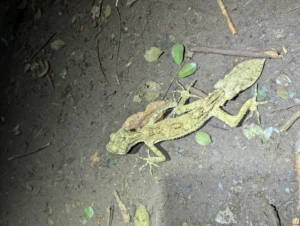
These geckos are so well hidden that even experts sometimes struggle to spot them in the wild.
Do Geckos Stay Still to Blend In?
Often, yes. Camouflage works best when they stay still. A gecko sitting on bark or stone may go unnoticed.
But if it moves, predators see it. That’s why geckos mix camouflage with quick dashes when they need to escape.
How Baby Geckos Use Camouflage
Baby geckos are even more vulnerable than adults. Their smaller size and soft skin make them easy targets.
Camouflage is their first defense. A baby gecko on a tree trunk, with muted brown shades, looks just like part of the bark.
This helps it survive long enough to grow.
Can Camouflage Fail Geckos?
Yes. Camouflage isn’t perfect. A hungry bird or careful snake might still spot them. Indoors, cats notice geckos even when they blend in.
Camouflage improves survival odds, but doesn’t guarantee safety. That’s why geckos also rely on quick movement, dropping their tails, and hiding in cracks.
Do Geckos Camouflage More at Night?
At night, many geckos naturally darken, which helps them disappear in the shadows.
Streetlights or moonlight make insects active, and geckos can hunt while staying mostly unseen.
Their camouflage blends them into the dim surroundings, so predators and prey have a hard time noticing them.
What About Albino or Brightly Colored Geckos?
Some pet geckos, like leopard geckos, are bred for bright colors such as orange, yellow, or even pink.
These geckos stand out instead of blending in, so camouflage doesn’t work as well.
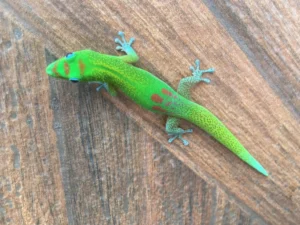
In captivity, that’s fine, they live safely in tanks. In the wild, bright colors would make survival harder.
Is Camouflage the Same as Hiding?
Not exactly. Camouflage is blending with the background. Hiding is finding a physical shelter, like under rocks or in cracks. Geckos often do both.
A house gecko may blend against a wall until it senses danger, then slip quickly into a crack behind a painting.
Do Geckos Use Camouflage to Hunt Indoors?
Yes. If you’ve wondered why you don’t notice geckos on walls until they move, that’s camouflage. They sit still, almost invisible, waiting for a moth or mosquito.
Then, in a flash, they grab it. Indoors, camouflage helps them hunt in plain sight.
Can Geckos See Their Own Camouflage?
Geckos don’t see camouflage like humans do. But they react to light, shade, and background, which helps their skin adjust.
Their survival depends on these natural responses, not conscious thought.
Whether on stone, bark, or walls, their bodies shift to blend in as best as possible.
Conclusion
So, do geckos camouflage? Yes, many do, and it’s one of their most important survival tools.
Camouflage helps them escape predators, catch insects, and live unnoticed in both wild and human spaces.
Some species take it to amazing levels, looking just like leaves or moss.
Next time you spot a gecko on a wall or tree, look closer, you may realize it was hiding in plain sight the whole time.
Hi, my name is Ezra Mushala, i have been interested animals all my life. I am the main author and editor here at snakeinformer.com.

